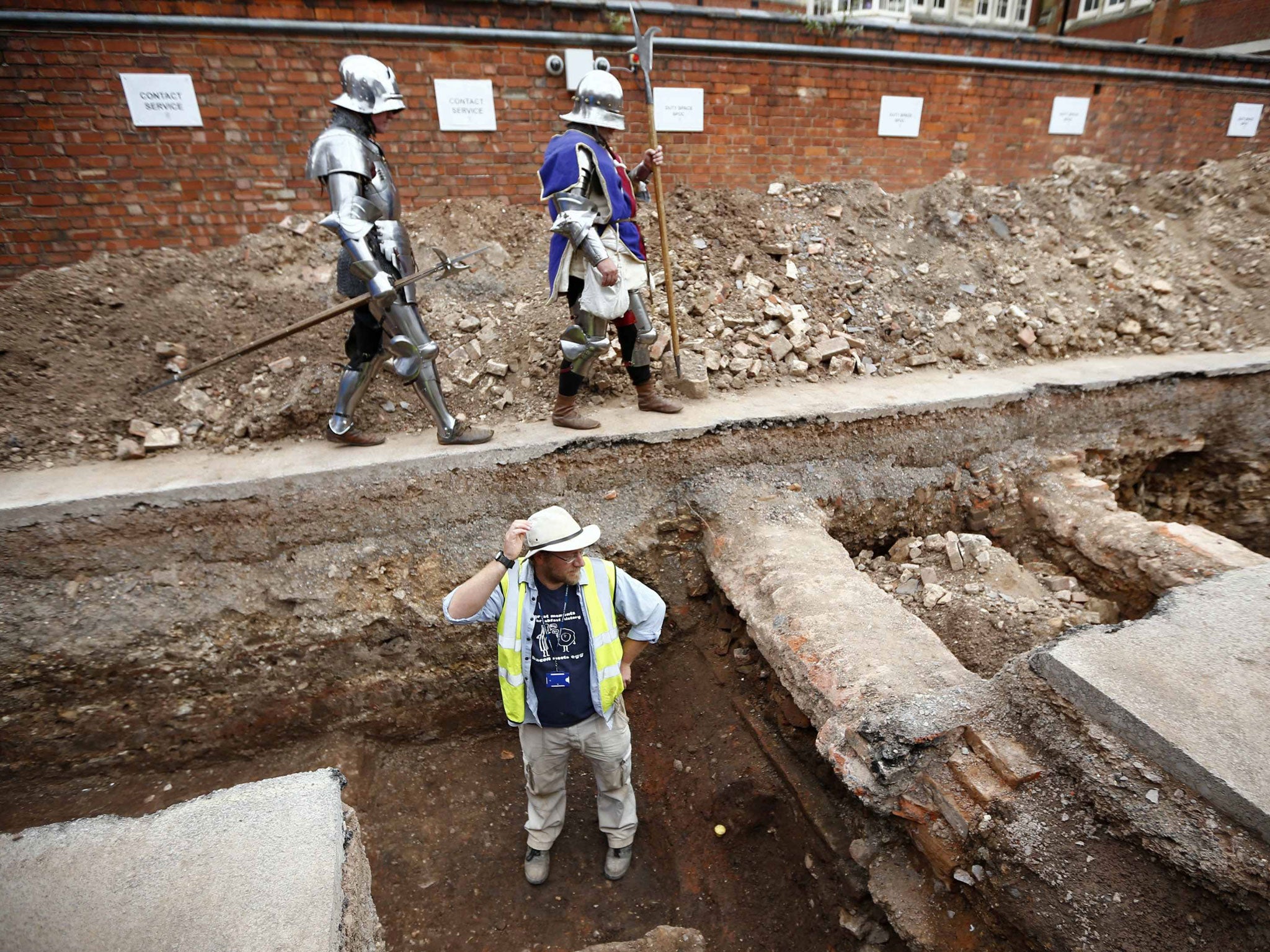Richard III archaeologists plan to exhume 600-year-old lead-lined stone coffin found in Plantagenet king’s car park in the hunt for medieval knight Sir William Moton
University of Leicester Archaeological Services said the tomb is one of four graves uncovered during the search for Richard III

The team of archaeologists who discovered the body of Richard III in a Leicester car park have announced their plans to exhume a 600-year-old lead-lined stone coffin found nearby.
Applications for an exhumation licence and the right to continue digging at the Church of the Grey Friars have been made to the Ministry of Justice and Leicester City Council respectively by University of Leicester Archaeological Services.
Earlier this year the same team revealed that remains found under the car park were “beyond reasonable doubt” those of the last Plantagenet king.
Now the archaeologists hope that the coffin may turn out to contain the 14th century remains of a medieval knight called Sir William Moton. He is believed to have been buried at Grey Friars Church in 1362 - more than a century before King Richard III.
Lead archaeologist Richard Buckley, of the University of Leicester, said: “This will be a great opportunity to confirm the plan of the east end of the Grey Friars church to learn more about its dating and architecture, and will give us the chance to investigate other burials known to be inside the building.”
He said the tomb is one of four graves uncovered during the search for Richard III.
The dig, due to start in July and lasting around four weeks, will involve excavations at the site of the former Alderman Newton Grammar School, next to the car park, and will entail partial demolition of a Victorian wall separating the sites.
Following further examination by the University of Leicester, preparations are taking place for the re-interment of King Richard III at Leicester Cathedral in spring next year.
Subscribe to Independent Premium to bookmark this article
Want to bookmark your favourite articles and stories to read or reference later? Start your Independent Premium subscription today.

Join our commenting forum
Join thought-provoking conversations, follow other Independent readers and see their replies